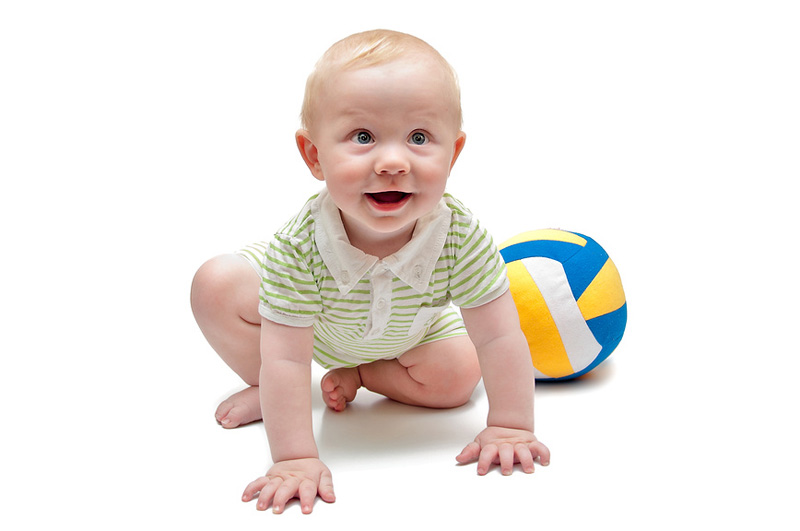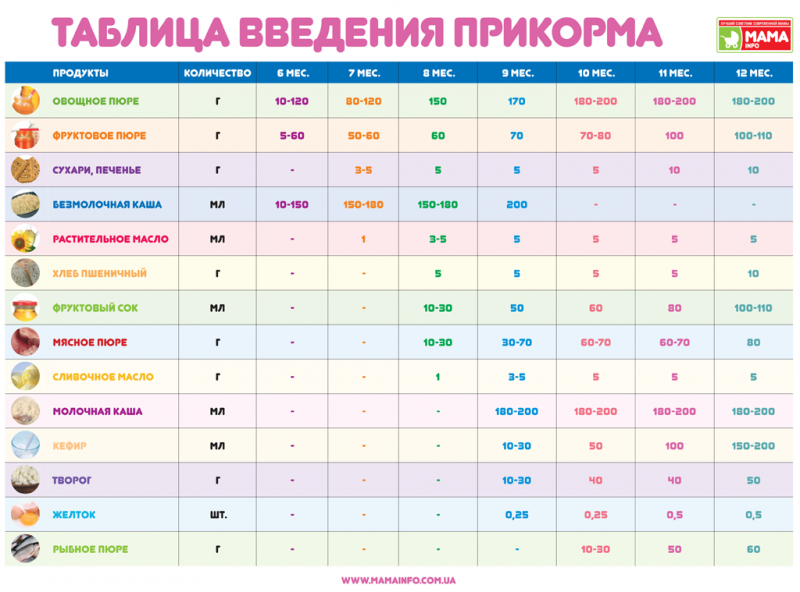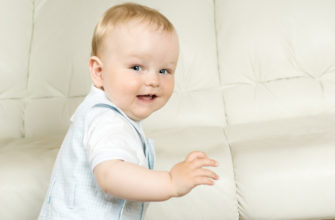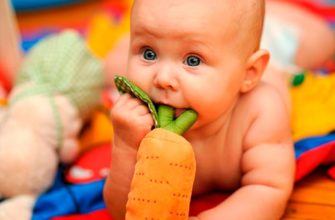10-month age is a fertile time for those mothers who in time were able to accustom their baby to the cyclical alternation of regimen moments. The body of a disciplined baby, accustomed to a certain regime of the day, informs him in advance when it is time for sleep, when it is time to eat, and when you can engage in an active study of the surrounding space.

Sleepless nights and a chronic lack of time needed to complete household chores are a thing of the past. Knowing the usual routine of her baby, the mother can plan her day in advance, without forgetting to save a little time for herself, for her husband, and for the rest of her household.
Approximate daily routine for a child of 9 months. Highlights
- 6:00-10:00 Awakening, first meal, complex mandatory hygiene procedures, morning gymnastics, associated with a relaxing massage and air baths.
- 10:00-10:30 The second meal is crumbs.
- 10:30-12:00 The period of the first day's rest.
- 12:00-14:00 Cognitive walk in the fresh air (familiarization with the outside world, its flora and fauna).
- 14:00-14:30 It's time for a snack.
- 14:30-15:30 Time for quiet educational games and reading children's books.
- 15:30-17:00 The second period of daytime sleep.
- 17:00-18:00 Active leisure, exercise, developing activities.
- 18:00-18:30 The fourth feeding of the baby.
- 18:30-20:30 Walk in the fresh air with all family members.
- 20:30-22:00 It's time to communicate with loved ones, calm developmental games using pyramids, blocks and manuals for the development of fine motor skills. Evening bathing baby.
- 22:00-22:30 Evening feeding of crumbs.
- 22:30-6:00 The period of night rest.
As can be seen from the table, the daily routine of the child at 10 months is almost identical to the regime of the previous month of development: it has five feedings, two walks and two periods of daytime rest, necessary for the crumb to restore strength. Stability is now necessary for the normal development of the baby, which is why the established order in the alternation of regimen moments does not need any adjustment or correction.
The importance of healthy sleep
A grown-up and actively developing baby is still not enough at night alone: losing a large amount of energy during outdoor games and in the process of developing the surrounding space, he needs at least two periods of daytime sleep.
The duration of these periods averages from one and a half to two hours, although occasionally a crumb can afford a longer rest. This sometimes happens in cloudy weather, during sleep in the fresh air, during a long car trip or after an overly intense game program.
The more energy the baby spends in the process of games and the more information he receives during developmental activities, the higher his need for a day rest, during which his muscles relax, his body stores energy, and the brain is engaged in processing information acquired in the process of active cognition of the world.

During a night sleep lasting at least eight hours, in addition to the aforementioned processes, an active development of the children's brain and all systems of a rapidly growing organism takes place.
At this age, each child already has a favorite pose, having taken which he falls asleep faster and feels most comfortable during sleep. Psychologists claim that the position adopted by the child in a dream can eloquently testify to his mental state and physical well-being. Position when baby:
- sleeping on his side, indicates confidence and a sense of comfort, the absence of disturbing factors and a state of complete relaxation;
- sleeping on his tummy, speaks either of his heightened emotionality, or of a feeling of fear; such a position can be taken by a child suffering from a runny nose, sore throat or increased gas formation (this position tells the mother that the baby at this moment needs her protection and special attention);
- sleeping on all fours, may indicate a suppressed feeling of protest (perhaps the crumb was laid at the moment when he did not want to sleep at all);
- sleeping with his knees to his chest, demonstrates the presence of strong fears and any anxiety.
In order not to cause any special problems with falling asleep in the evening, you should create a calm atmosphere in the house: turn off the TV, bathe the baby, give him a relaxing massage, read a book with vivid illustrations, sing a quiet lullaby. Sleep in a well-ventilated room will be especially sound.
Ten months is the time to teach a child to potty. This should be done delicately and by no means forcibly. The most favorable moment for planting on the pot is the awakening of the baby.
The duration of stay on the pot should not exceed ten minutes. At this moment, one should not distract the baby with toys: he may simply not understand for what purpose he was put there. If a baby who has just woken up will be able to use the pot for its intended purpose, it is necessary to praise it.
READ ALSO: how to teach a child a potty
About the features of the children's diet
The menu of a ten-month-old child should be nutritious and varied, including dishes from vegetables, fruits, meat and fish. An important factor is a balanced diet, a high content of trace elements and vitamins in it.

The diet still consists of five meals with strict adherence to the four-hour interval between them. If possible, breastfeeding should be preserved by applying crumbs to the breast only in the morning (after waking up) and evening (before laying down at night) hours. For a day, the baby should eat 1200 g of wholesome food and drink at least 200 ml of liquid (water, juice, fruit drinks or tea).
- New dishes appear in the child’s diet: boiled vermicelli and milk noodles, with which you can replace the usual porridge no more than once a week;
- Now you can periodically prepare a soft casserole from the children's cottage cheese;
- To develop a healthy chewing reflex, you need to give your baby crackers, baby cookies, slices of not too hard fruits and vegetables;
- Given the presence of teeth, meat and fish begin to cook meatballs, dumplings, meatballs and meatballs, baking them in the oven or using a double boiler;
- The liver paste is gradually introduced into the child’s diet;
- Instead of meat, crumbs should receive an egg yolk twice a week. Fish on his table should appear no more than once a week;
- Sometimes, instead of mashed potatoes made from boiled vegetables, you can give the crumbs raw fruits or vegetables grated on a fine grater. A mixture of carrots and apples is very useful for him;
- The children's diet of this period contains a rich assortment of fruits. Only citrus fruits and grapes are contraindicated in crumbs.
The ten-month-old's daily menu should be something like this:
- 6:00 Milk formula (150-200 ml) or breast milk.
- 10:00 Any porridge or milk vermicelli, cottage cheese, pudding or casserole, tea or compote.
- 14:00 A light soup made of vegetables cooked in meat broth, a slice of bread, mashed potatoes with a cutlet, a piece of boiled meat or fish, fruit juice.
- 18:00 Puree of fruits or vegetables (or grated raw carrots with apples), baby cookies or crackers, fruit drinks or compote.
- 22:00 Applying to the mother’s breast, a bottle with milk formula or with baby kefir (200 ml).
The desire of the baby to eat and drink on its own should be encouraged in every possible way. To do this, he should have a bowl on the suction cup and a non-spill mug. The food in the bowl should be such that the crumbs were able to bring it to the mouth without losing it along the way.
READ ALSO: how to teach a child to drink from a mug
About physical activity
Ten-month-old babies are extremely mobile: they crawl perfectly, rapidly moving from one room to another, sit for a long time with a straightened back, confidently stand at the support, and many begin to walk.
To strengthen the muscle, the baby needs regular complexes of special physical exercises. The best time for morning gymnastics is the first hours after waking up, until the baby begins to actively crawl and walk.
The gym should include exercises:
- on the circular rotation of the handles;
- with a squat;
- with alternating bending and extension of the knees;
- with the raising of straightened legs;
- with hanging and holding the baby on the gymnastic rings.
Regular gymnastics helps build muscle, which is designed to support the bones and spine. After gymnastics is completed, it is possible to relieve muscle tension with the help of a relaxing massage, which is reduced to their longitudinal stroking and light rubbing.
The second block of physical exercises should be performed during active leisure in the evening. Gymnastics is necessary in a well-ventilated area, combining it with the adoption of air baths.
It is very important to teach the mobile baby to get down from the bed or sofa correctly. This useful skill will prevent the risk of injury. The kid should understand that first he should lie on his tummy and, sliding off the edge of the bed, lower the legs. The acquired skill should be practiced several times during the day.
Knowing the beneficial effects of oxygen on the development of the brain, a mother should walk with her baby at least twice a day. If for any reason this is not possible, the cradle with the warmly dressed sleeping baby can be taken out onto the balcony.
About Intellectual Development and Educational Games
- Ten-month-old babies begin to pronounce their first words, consisting of repeating syllables, so the arsenal of developmental activities should be replenished with speech games. During the game, “Who's howl?” Mom, showing the baby the appropriate toy, must clearly pronounce onomatopoeic words: “be-be-be-be”, “meow-meow”, “ko-ko-ko”, “woof-woof”. Laying the doll in the cradle, you must say several times: "buy-by." Showing the baby that the teddy bear is leaving him, you need to wave his hand, saying: "bye, bye."
- To enrich a passive vocabulary, develop memory and a sense of rhythm, you need to read a little short poems, to sing children's songs.
- Reading books and looking at colorful illustrations is interesting and useful for all kids. When examining pictures depicting animals and people, it is necessary to show and name parts of the body, small details of the face.After a while, the clever little one himself will begin to point to them at the request of his mother.
- You can perform the simplest exercises of articulatory gymnastics with your baby: make faces, stretch your lips and stretch them into a smile, show the tongue, curl it up, clatter, imitating the knock of horse hooves. By strengthening the muscle groups involved in sound pronunciation in this way, the mother will contribute to the proper development of the articulation apparatus.
- It is at this age that one can notice that one of the baby's hands becomes dominant. This is the basis for classifying it as “right-handed” or “left-handed”.
- Fine motor skills of the crumbs are so developed that it allows him to easily take any items and capture small parts with two fingers. This skill should be developed during modeling. You can give the baby a piece of dough or soft plasticine: let it nip small pieces from it and attach them to a sheet of cardboard, pressing with one finger.
- You can give your baby a pencil or a brush and paints: he will gladly start drawing lines on paper.
- Folding a tiny pyramid or tower of cubes, you can introduce him to the idea of size and quantity.
Strict adherence to the daily routine is a guarantee that the growing baby will develop successfully and harmoniously, and his mother will be able to combine caring for him with a lot of urgent household chores.
READ ALSO: how to keep up with the child?
← 9 months daily routine daily routine at 11 months →
Video guide
[sc: rsa]








